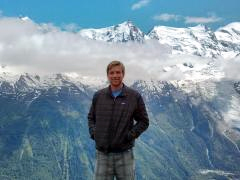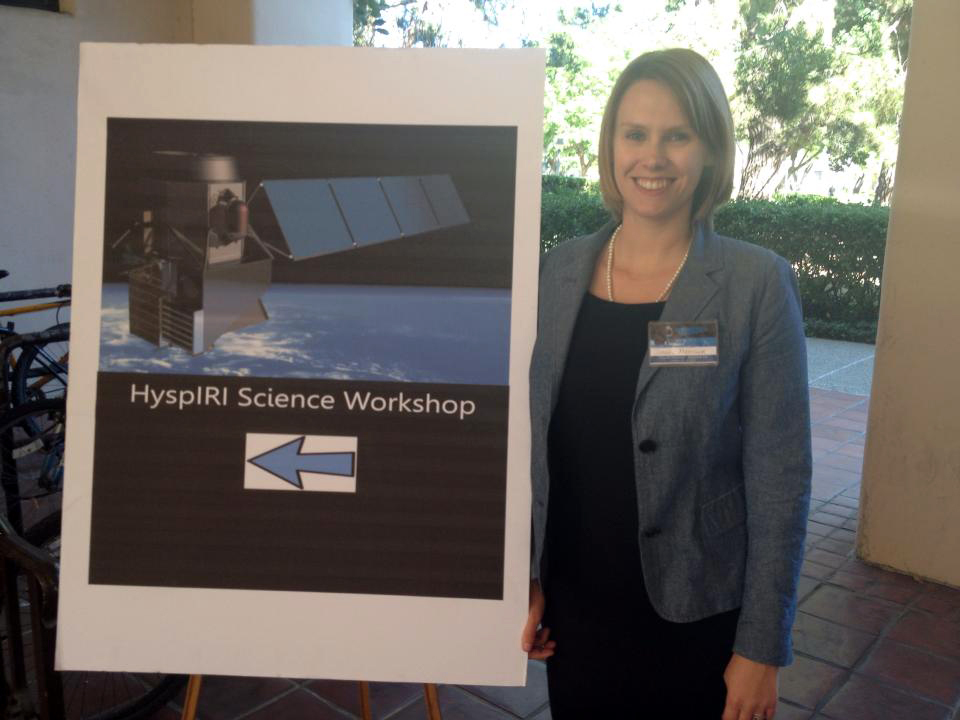Geography graduate students Mike Alonzo, Forest Cannon, and Susan Meerdink received Outstanding Student Paper Awards (OSPA) at the American Geophysical Union’s Fall Meeting which was held in San Francisco, 15-19 December, 2014. Typically, only the top 3-5% of presenters in each section/focus group are awarded an OSPA. With nearly 24,000 attendees and more than 1,700 sessions, the AGU Fall Meeting is the largest and most prestigious earth and space science meeting in the world.
Over 15,000 posters were presented (all categories), including 3,200 by students this year. Considering that only about 130 OSPAs were given, the fact that UCSB Geography students garnered 3 of them is impressive. Mike and Susan scored gold in the Biogeoscience sector, and Forest won in the Atmospheric Science category.
Mike’s poster was titled “Mapping Urban Forest Leaf Area Index Using Airborne Lidar” (co-authored by Bodo Bookhagen, Joe McFadden, Alex Sun, and Dar Roberts). “Many urban forest ecosystem services (e.g., air pollution reduction, stormwater runoff dampening, and delay) are governed by canopy leaf area. In this research, we attempted to quantify leaf area in a complex urban environment at fine spatial resolution using airborne lidar. The product of this effort is a citywide map of leaf area that can be used to create spatially explicit estimates of ecosystem structure and function.”
Susan’s oral presentation was titled “Linking Seasonal Foliar Chemistry to VSWIR-TIR Spectroscopy Across California Ecosystems” in Biogeosciences. Her coauthors were Dar Roberts, Jennifer King, Keely Roth, Cibele Amaral, and Simon Hook. “In this research we evaluate the potential of using the Visible Near Infrared/ Short Wave Infrared (VSWIR) and Thermal Infrared (TIR) to identify seasonal plant species foliar traits. The results of this research demonstrate the potential for the proposed NASA Hyperspectral Thermal Imager (HyspIRI) satellite mission to have increased accuracies for prediction of plant traits across all seasons and California ecosystems.”
Forest’s presentation (in Atmospheric Sciences) was titled “Winter Westerly Disturbance Activity in High Mountain Asia: A Wave Tracking Approach” (coauthored by Leila Carvalho, Charles Jones and Jesse Norris). “In this work, we present a novel extratropical cyclone tracking methodology, which provides an inventory of location, timing, intensity and duration of events. This approach enables a comprehensive study of the factors that relate westerly disturbances to orographic precipitation in High Mountain Asia, on an individual event basis and in the aggregate.” Forest goes on to state: “Most of the credit should go to the coauthors, especially Leila. I would also like to thank the Dangermond Family and the Earth Research Institute for providing the necessary funding to attend AGU.”
Editor’s note: Many thanks to Leila Carvalho for bringing these bragging rights to our attention (the grad students were too shy).




